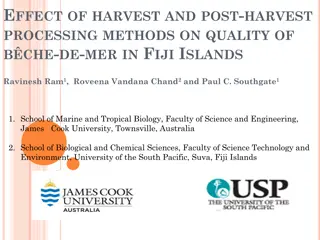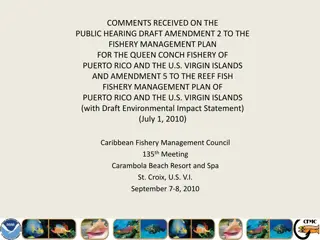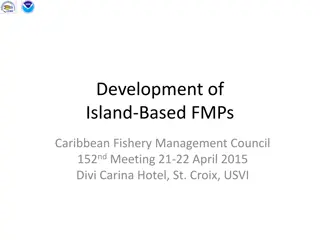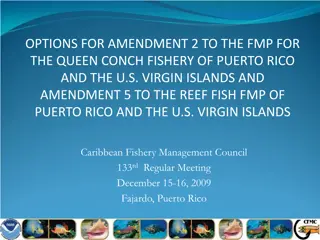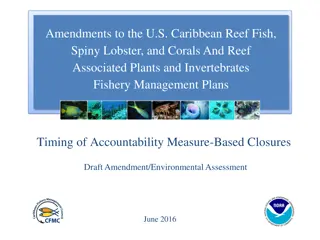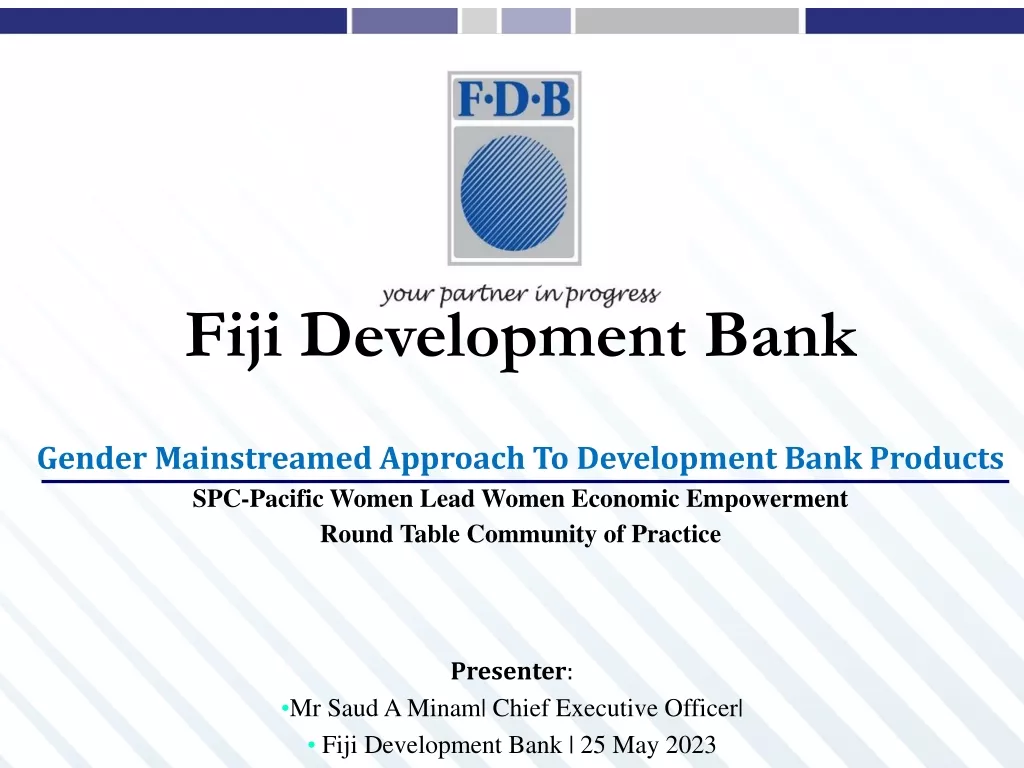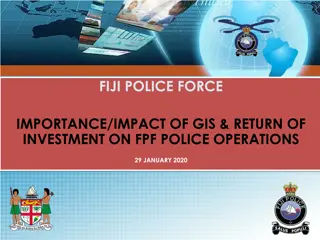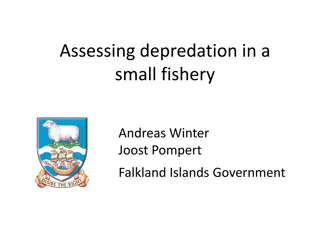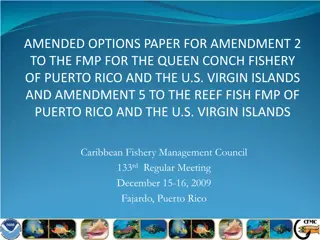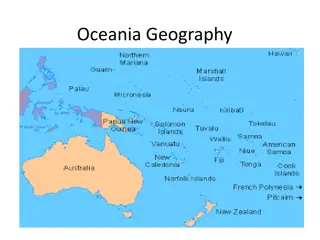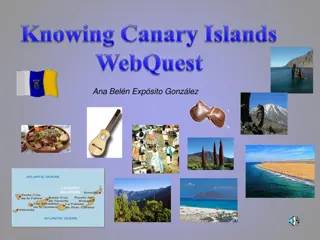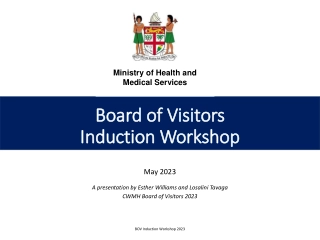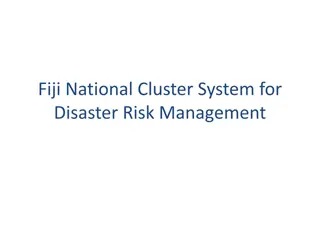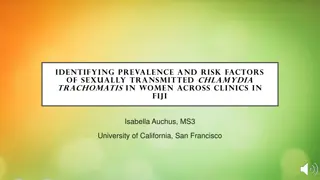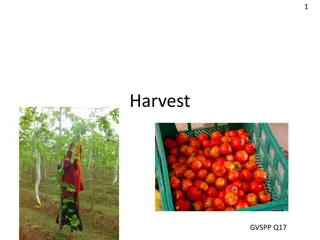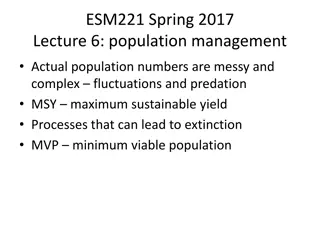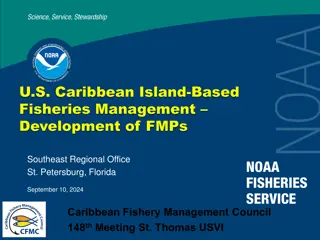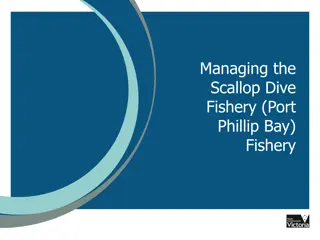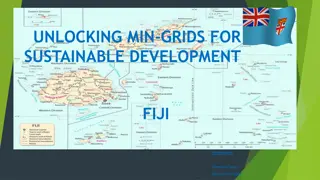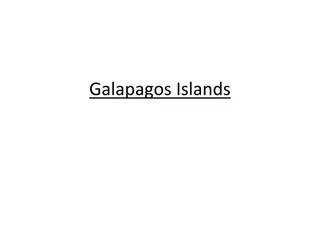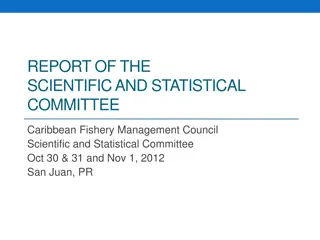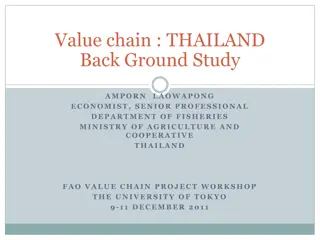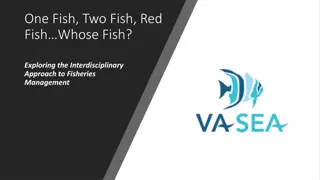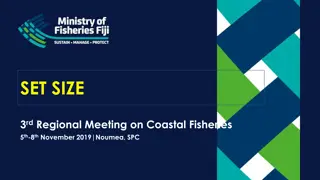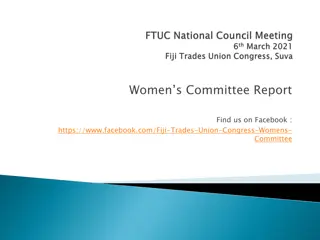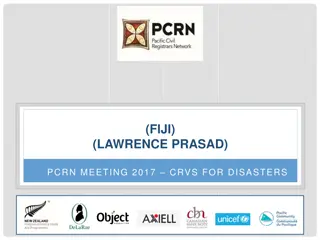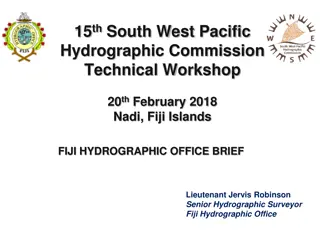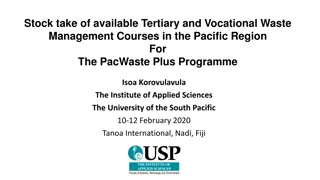Sustainable Harvesting for Improved Bche-de-mer Fishery in Fiji Islands
Sea cucumbers have been a vital income source in Fiji, but outdated processing methods and management practices have hindered progress. Research aims to enhance the bche-de-mer fishery through sustainable harvesting and proper management for economic and ecological benefits.
Download Presentation

Please find below an Image/Link to download the presentation.
The content on the website is provided AS IS for your information and personal use only. It may not be sold, licensed, or shared on other websites without obtaining consent from the author. Download presentation by click this link. If you encounter any issues during the download, it is possible that the publisher has removed the file from their server.
E N D
Presentation Transcript
Improvements in bche-de-mer fishery through sustainable harvesting in Fiji Islands: An overview Roveena Vandana Chand1, Ravinesh Ram2and Paul C. Southgate2 1. School of Biological and Chemical Sciences, Faculty of Science Technology and Environment, University of the South Pacific, Suva, Fiji Islands 2. School of Marine and Tropical Biology, Faculty of Science and Engineering, James Cook University, Townsville, Australia
Presentation Overview Introduction Study site Study design Current status of Fiji sea cucumber fishery Resolving current problems Future problems List of IUCN sea cucumber redlist species Conclusion
Introduction/Background Sea cucumbers have been a major source of income for Fijian communities. Processing methods used by the people is 2 centuries old Fiji s management act on sea cucumbers is old and has not been amended since 1980 s A number of research has been conducted for improving the income, quality and sea cucumber management in the Pacific Islands (Carleton, 2013; Friedman, 2010) Main aim of this research is to report on the improvements of b che-de-mer fishery in Fiji through proper management and sustainable harvesting
Location of Fiji Islands Source: http://ngm.nationalgeographic.com/ngm/0411/feature3/images/mp_full.3.jpg
Study Design Data collected through online databases and through personal observations A number of people in the BDM trade were interviewed (fishers, exporters and Marine agents)
Current Status Fijis exports 27 commercial species from Genera: Holothuria sp Actinopyga sp Stichopus sp Thelenota sp Bohadschia sp Pearsonothuria sp
The main target species Target species Holothuria scabra (Sandfish) (US$ 16-45/kg dry/ Fiji $US 90/kg) VH Holothuria fuscogilva (White teatfish) ($US 45-85/kg dry) VH Holothuria lessoni (Golden Sandfish) (US$ 16-45/kg dry/ Fiji $US 60/kg) H Holothuria whitmaei (Black teatfish) ($US 25-65/kg dry) H Thelenota ananas (Prickly redfish) ($US 25-65/kg dry) H Stichopus chloronotos (Greenfish) ($US 25-65/kg dry) H Actinopyga echnites (Deep water redfish) ($US 25-65/kg dry) H Actinopyga mauritiana (Surf redfish) ($US 25-40/ kg dry) H VH very high value H High value M- medium value (10 species) L-Low value (4 species)
Fijis export status Source: Ministry of Fisheries and Forests: Fiji
Current Status Holothuria scabra (Sandfish) is the only banned species since 1988 due to overexploitation For local consumption a decline in catch from 34t in 1986 1991 to 14t in 2003 2005. Unreported data on export status has not been documented.
Current Status No management plan for future No seasonal closure since the BDM fishery began in 1800 s (recent studies indicated Fiji needs a season closure period)
Current status Lack of enforcement and regulations in harvesting sea cucumbers from the deep Lack of community based education and awareness Use of SCUBA (9 in 2010 to 25 in 2013) (> 30m) Number of companies rose from 7 in 2003 to 11 in 2013 (Fiji fisheries report, 2013)
Resolving current problems 1.Complete ban on SCUBA (>108 deaths reported) 2.Seasonal closure 3.Harvesting quotas allocated to the fishers and exporters 4.Eliminating the use of sea cucumber bomb
Resolving current problems 5. Adding value to the medium-low value species since there is a shift of exploitation from high value species to low valued species (since 2003 2012 a decline in high value species volume was recorded from 14 8% and medium rose from 50 59%. 6.Decreasing the issue of b che-de-mer export license 7.Use of marine protected areas to start sea ranching program 8.Study needs to be done on the reproductive biology of all commercial sea cucumber species (information will help understand the actual length and weight to be harvested) current 76mm size is applied to all the species.
Future problems Global warming and global sea temperature rise will affect sea cucumber reproduction Emergence of holothurian diseases that will affect broodstock and juvenile sea cucumbers Overfishing (8 species in IUCN redlist) Ecosystem balance will be altered
List of IUCN species Adapted from Conand et al (2014)
Conclusion Proper/revised sea cucumber management plan needs to established in Fiji since the ACT is old The harvests in Fiji is slowly shifting from high value species to medium to low value species.
References Carleton C., Hambrey J., Govan H., Medley P. and Kinch J. 2013. Effective management of sea cucumber fisheries and the beche- de-mer trade in Melanesia. SPC Fisheries Newsletter 140:24 42. Friedman K., Eriksson H., Tardy E. and Pakoa K. 2010. Management of sea cucumber stocks: Patterns of vulnerability and recovery of sea cucumber stocks impacted by fishing. Fishing and Fisheries 12(1):75 93. Purcell, S., Managing sea cucumber fisheries with an ecosystem approach, A. Lovatelli, M. Vasconcellos, and Y. Yimin, Editors. 2010, FAO Fisheries and Aquaculture Technical Paper No. 520.: Rome; FAO. p. 157.
Thank You ??


